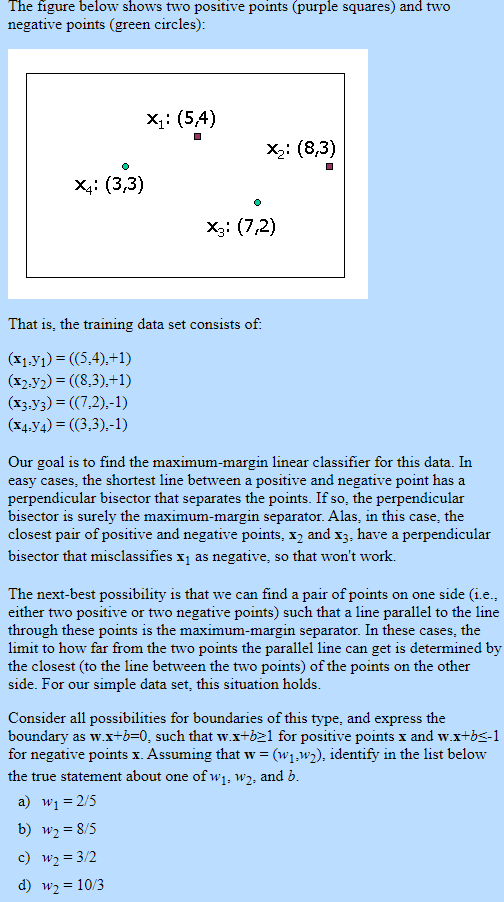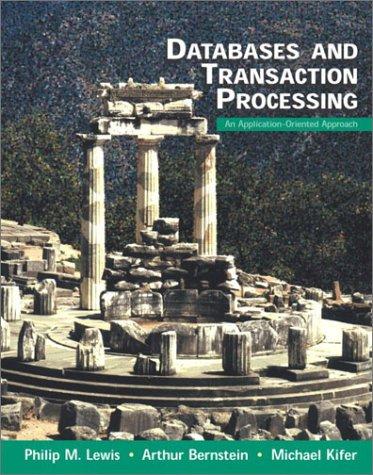
The tigure below shows two positive points (purple squares) and two negative points (green circles) (54) (7,2) That is, the training data set consists of (x3.y3) (7.2),-1) (x4y4) (3,3),-1) Our goal is to find the maximum-margin linear classifier for this data. In easy cases, the shortest line between a positive and negative point has a perpendicular bisector that separates the points. If so, the perpendicula bisector is surely the maximum-margin separator. Alas, in this case, the closest pair of positive and negative points, x2 and x3, have a perpendicular bisector that misclassifies x1 as negative, so that won't work. The next-best possibility is that we can find a pair of points on one side (i.e., either two positive or two negative points) such that a line parallel to the line through these points is the maximum-margin separator. In these cases, the limit to how far from the two points the parallel line can get is determined by the closest (to the line between the two points) of the points on the other side. For our simple data set, this situation holds Consider all possibilities for boundaries of this type, and express the boundary as w.xtb-0, such that w.x+bzl for positive points x and w.xtbs-1 for negative points x. Assuming that w (wi.w2), identify in the list below the true statement about one of w1, w. and b a) w1 2/5 b) w2 -8/4 d) w2 10/3 The tigure below shows two positive points (purple squares) and two negative points (green circles) (54) (7,2) That is, the training data set consists of (x3.y3) (7.2),-1) (x4y4) (3,3),-1) Our goal is to find the maximum-margin linear classifier for this data. In easy cases, the shortest line between a positive and negative point has a perpendicular bisector that separates the points. If so, the perpendicula bisector is surely the maximum-margin separator. Alas, in this case, the closest pair of positive and negative points, x2 and x3, have a perpendicular bisector that misclassifies x1 as negative, so that won't work. The next-best possibility is that we can find a pair of points on one side (i.e., either two positive or two negative points) such that a line parallel to the line through these points is the maximum-margin separator. In these cases, the limit to how far from the two points the parallel line can get is determined by the closest (to the line between the two points) of the points on the other side. For our simple data set, this situation holds Consider all possibilities for boundaries of this type, and express the boundary as w.xtb-0, such that w.x+bzl for positive points x and w.xtbs-1 for negative points x. Assuming that w (wi.w2), identify in the list below the true statement about one of w1, w. and b a) w1 2/5 b) w2 -8/4 d) w2 10/3







